Marco Paolieri
Predicting Ground Reaction Force from Inertial Sensors
Nov 04, 2023Abstract:The study of ground reaction forces (GRF) is used to characterize the mechanical loading experienced by individuals in movements such as running, which is clinically applicable to identify athletes at risk for stress-related injuries. Our aim in this paper is to determine if data collected with inertial measurement units (IMUs), that can be worn by athletes during outdoor runs, can be used to predict GRF with sufficient accuracy to allow the analysis of its derived biomechanical variables (e.g., contact time and loading rate). In this paper, we consider lightweight approaches in contrast to state-of-the-art prediction using LSTM neural networks. Specifically, we compare use of LSTMs to k-Nearest Neighbors (KNN) regression as well as propose a novel solution, SVD Embedding Regression (SER), using linear regression between singular value decomposition embeddings of IMUs data (input) and GRF data (output). We evaluate the accuracy of these techniques when using training data collected from different athletes, from the same athlete, or both, and we explore the use of acceleration and angular velocity data from sensors at different locations (sacrum and shanks). Our results illustrate that simple machine learning methods such as SER and KNN can be similarly accurate or more accurate than LSTM neural networks, with much faster training times and hyperparameter optimization; in particular, SER and KNN are more accurate when personal training data are available, and KNN comes with benefit of providing provenance of prediction. Notably, the use of personal data reduces prediction errors of all methods for most biomechanical variables.
Inference Latency Prediction at the Edge
Oct 06, 2022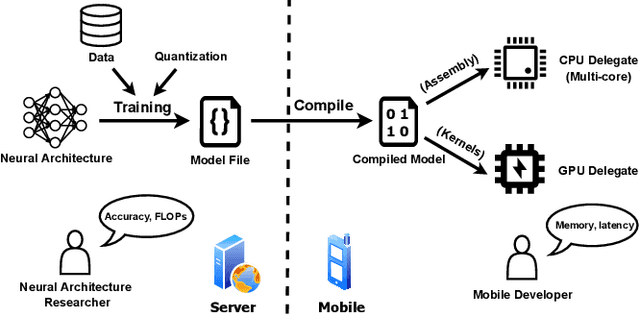
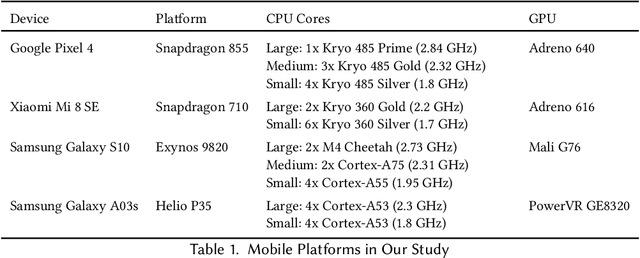
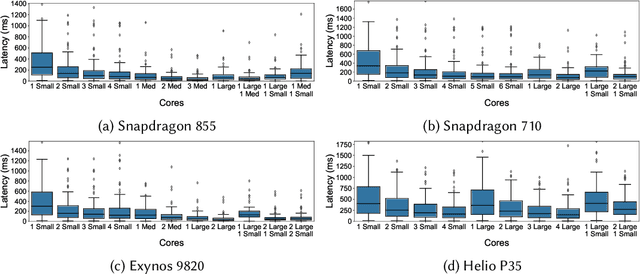

Abstract:With the growing workload of inference tasks on mobile devices, state-of-the-art neural architectures (NAs) are typically designed through Neural Architecture Search (NAS) to identify NAs with good tradeoffs between accuracy and efficiency (e.g., latency). Since measuring the latency of a huge set of candidate architectures during NAS is not scalable, approaches are needed for predicting end-to-end inference latency on mobile devices. Such predictions are challenging due to hardware heterogeneity, optimizations applied by ML frameworks, and the diversity of neural architectures. Motivated by these challenges, in this paper, we first quantitatively assess characteristics of neural architectures and mobile devices that have significant effects on inference latency. Based on this assessment, we propose a latency prediction framework which addresses these challenges by developing operation-wise latency predictors, under a variety of settings and a number of hardware devices, with multi-core CPUs and GPUs, achieving high accuracy in end-to-end latency prediction, as shown by our comprehensive evaluations. To illustrate that our approach does not require expensive data collection, we also show that accurate predictions can be achieved on real-world NAs using only small amounts of profiling data.
Backdoor Attacks on Federated Meta-Learning
Jun 12, 2020

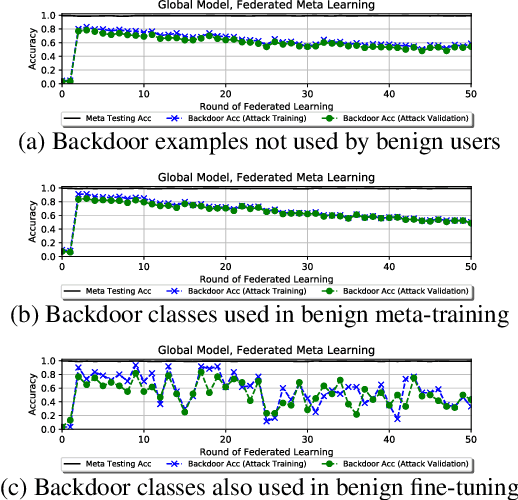
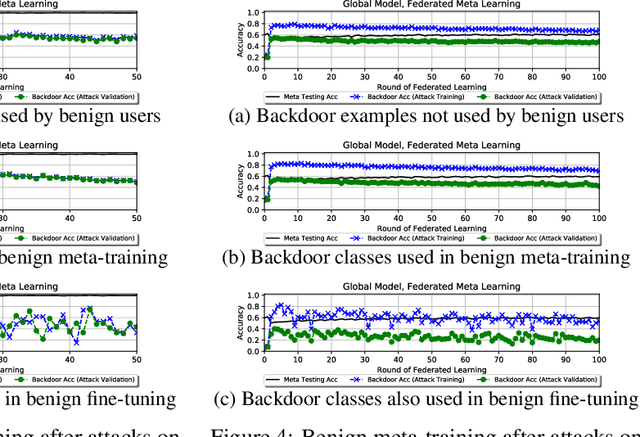
Abstract:Federated learning allows multiple users to collaboratively train a shared classification model while preserving data privacy. This approach, where model updates are aggregated by a central server, was shown to be vulnerable to backdoor attacks: a malicious user can alter the shared model to arbitrarily classify specific inputs from a given class. In this paper, we analyze the effects of backdoor attacks in federated meta-learning, where users train a model that can be adapted to different sets of output classes using only a few training examples. While the ability to adapt could, in principle, make federated learning more robust to backdoor attacks when new training examples are benign, we find that even 1-shot poisoning attacks can be very successful and persist after additional training. To address these vulnerabilities, we propose a defense mechanism inspired by matching networks, where the class of an input is predicted from the cosine similarity of its features with a support set of labeled examples. By removing the decision logic from the model shared with the federation, success and persistence of backdoor attacks are greatly reduced.
Throughput Prediction of Asynchronous SGD in TensorFlow
Nov 12, 2019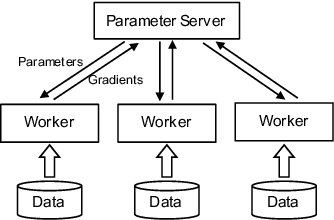

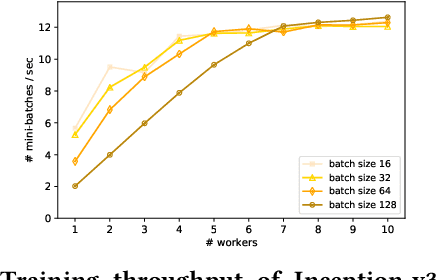
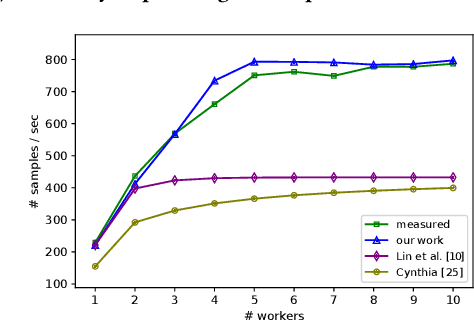
Abstract:Modern machine learning frameworks can train neural networks using multiple nodes in parallel, each computing parameter updates with stochastic gradient descent (SGD) and sharing them asynchronously through a central parameter server. Due to communication overhead and bottlenecks, the total throughput of SGD updates in a cluster scales sublinearly, saturating as the the number of nodes increases. In this paper, we present a solution to predicting training throughput from profiling traces collected from a single-node configuration. Our approach is able to model the interaction of multiple nodes and the scheduling of concurrent transmissions between the parameter server and each node. By accounting for the dependencies between received parts and pending computations, we predict overlaps between computation and communication and generate synthetic execution traces for configurations with multiple nodes. We validate our approach on TensorFlow training jobs for popular image classification neural networks, on AWS and on our in-house cluster, using nodes equipped with GPUs or only with CPUs. We also investigate the effects of data transmission policies used in TensorFlow and the accuracy of our approach when combined with optimizations of the transmission schedule.
 Add to Chrome
Add to Chrome Add to Firefox
Add to Firefox Add to Edge
Add to Edge